A journey through subterranean Bremen
Tourism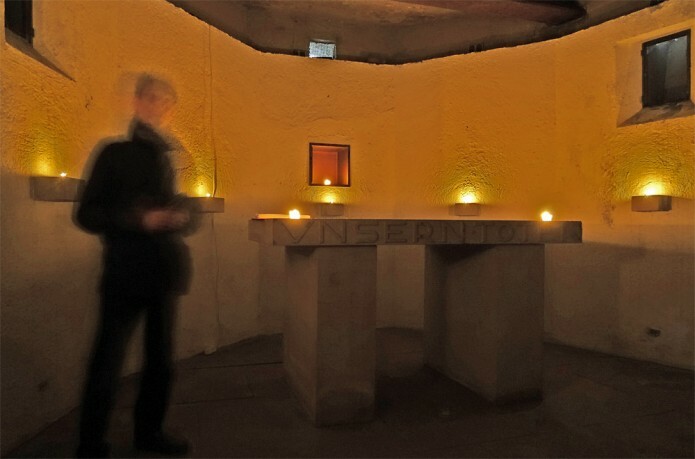
On my daily commute, I cycle past any number of bunkers and subterranean spaces. Although I’m aware of a few, I don’t even notice most of them. But they all have one thing in common – I can’t get in. Recently, however, I did manage to get inside and explore some of these places along my route. And I have to say, it was a really amazing experience.
It’s important to know our products if we are to give our guests the best possible advice. Whether it’s new hotels or guided tours, employees in our service centre and in our tourist information offices regularly check out new offerings and report back to the team. This time, I joined a shortened tour of subterranean Bremen, which is run by StattReisen Bremen. The full-length tour takes a good two hours – suitable shoes, warm clothing and a decent amount of stamina are recommended.
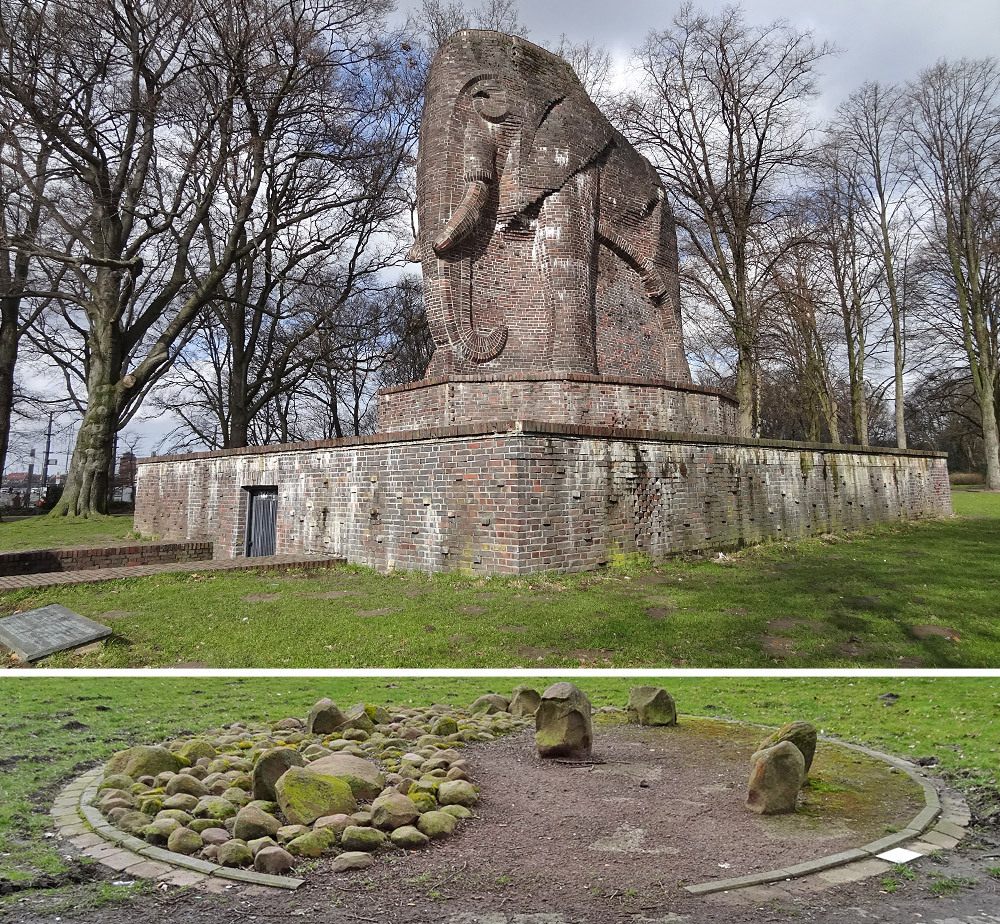
An elephant as a memorial to the legacy of colonialism
Camera packed, tripod at the ready – and we’re off. Our first stop is the brick elephant in Nelson Mandela Park, right behind the main train station. An elephant in Bremen? “Is that the entrance to the zoo?” is a question our guide is familiar with. It would be nice if it was a zoo, but its story is less pleasant. It’s about colonial history. In particular, about a tobacco merchant from Bremen called Adolf Lüderitz, who, together with another merchant, Heinrich Vogelsang, conceived the idea of founding a colony in an as yet unoccupied region of south-west Africa. Through deception they managed to acquire huge swathes of land, and modern-day Namibia still has a bay and a city named after Lüderitz. The monument was originally built in 1931 in remembrance of German soldiers who had fallen in colonial wars, but in 1989 it was rededicated as an anti-colonial memorial. In 2009, a memorial made of stones from the Namibian desert was added in remembrance of the Nama and Ovaherero tribespeople who died during the colonial war.
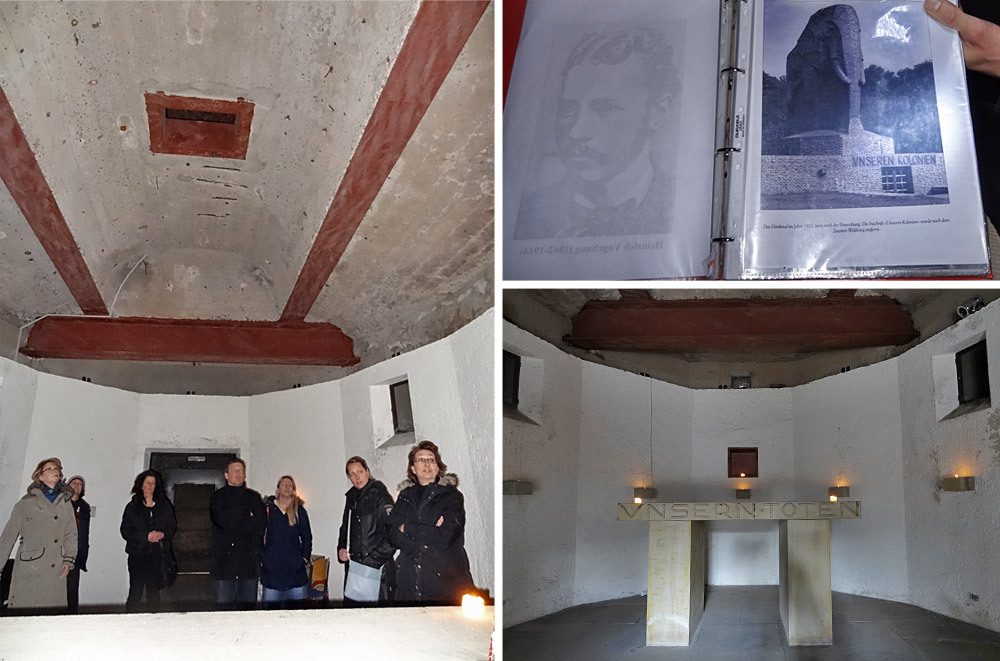
But this tour is about what lies beneath: in this case beneath the elephant. Andreas has lit up the room with a few candles, creating a remarkable atmosphere. This space was used for events when the monument was first built, then also later during the Nazi era, and now again today. The Verein “Der Elefant!” society, which looks after the monument, aims to promote diversity, tolerance and creativity through education, art and culture, and the space beneath the elephant has once again become a meeting place.
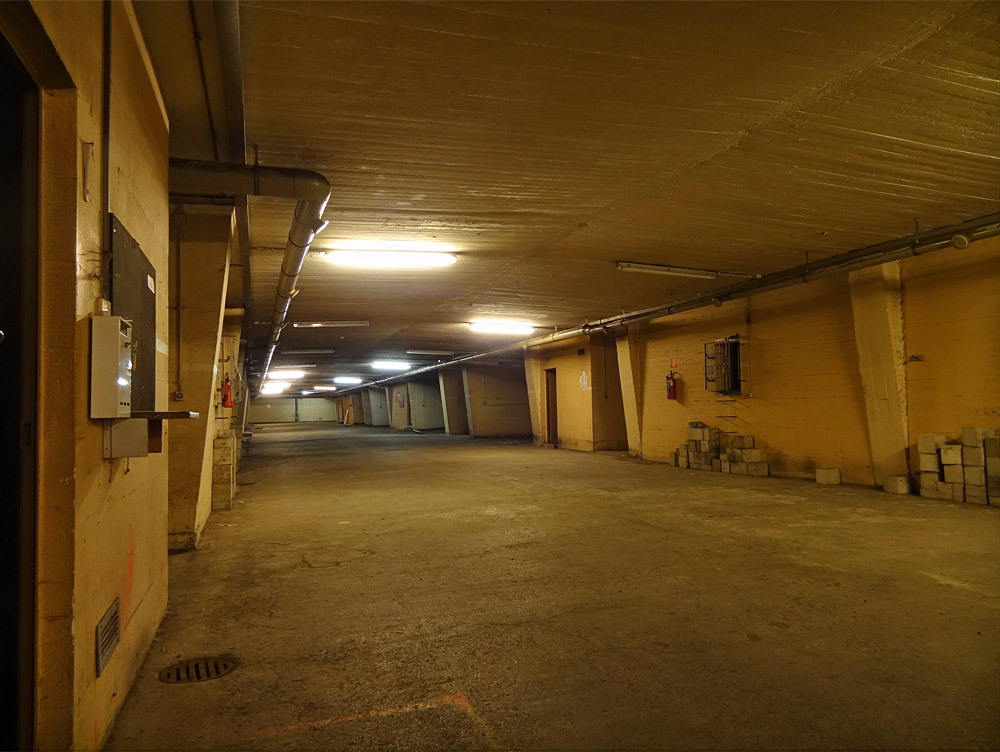
A haven from war and home for the homeless
Another stop on our tour is a bunker designed for 900 people, and once you see it, you realise how unimaginable that is. The main entrance doubles as a vehicular access. There are two further entrances and exits, and these are separated from the interior by an air lock, i.e. by two doors that are never opened at the same time.
One entrance can be seen on the train station’s forecourt. My ears prick up when Andreas tells us what we shouldn’t do – press the red buttons. That would cause the slab above to be lowered without warning, along with any passersby on it. We decide not to give it a go; but even if we did, it probably no longer works. Or perhaps it does!? I can’t get the thought out of my head, and my curiosity has been piqued. Some of the women can’t get the thought of huge spiders, said to have been seen here, out of their heads. Are these mutations, perhaps? Time to get out of here. And then the lights go out, so that the fluorescent paint indicating the exits is visible. Andreas was kind enough to hand out torches to anyone who’s afraid of the dark.
In the 1980s, the bunker was retrofitted to protect against ABC attacks, and it would have been possible to take shelter here for twelve hours. A filter of quartz sand, a lead barrier and the bricking up of the last opening were supposed to keep radioactivity at bay. Question is, what was going on outside after twelve hours? That only a tiny proportion of the German population would have had room in bunkers such as this one, whose adequacy seems somewhat questionable, shows that we are pretty much powerless against the dangers and horrors of war.
Almost equally horrifying to me is the fact that the bunker was used as a mass refuge for homeless men for 25 years after the war, before the Papageienhaus hostel was built. At its peak, it housed 190 “antisocial elements”. I remember I once stayed in a spartan, dirty, window-less and claustrophobic hotel room in a faraway country (it was cheap), where I suffered horrible dreams of aggressive insects. What would these men have dreamt of?
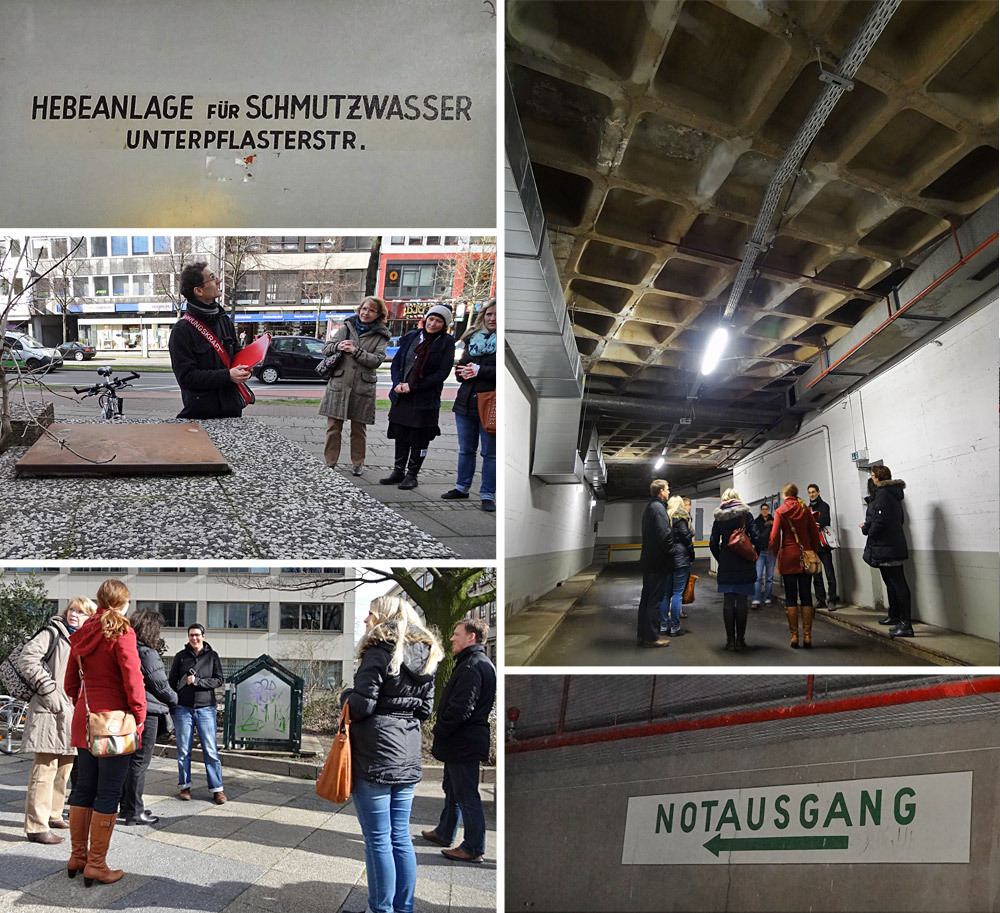
Unterpflasterstrasse – a subterranean boon for Bremen’s underworld
Towards Wallanlagen Park, right by the ‘club mile’, we discover the little-known Unterpflasterstrasse. We thought we knew the city quite well, but none of us had heard of it before. It looks like an underground car park, but it’s designed for deliveries only. There are many points of access, for example near the Tower night club. So, who knows about this? Criminals, of course, who use this subterranean street to escape from the police.
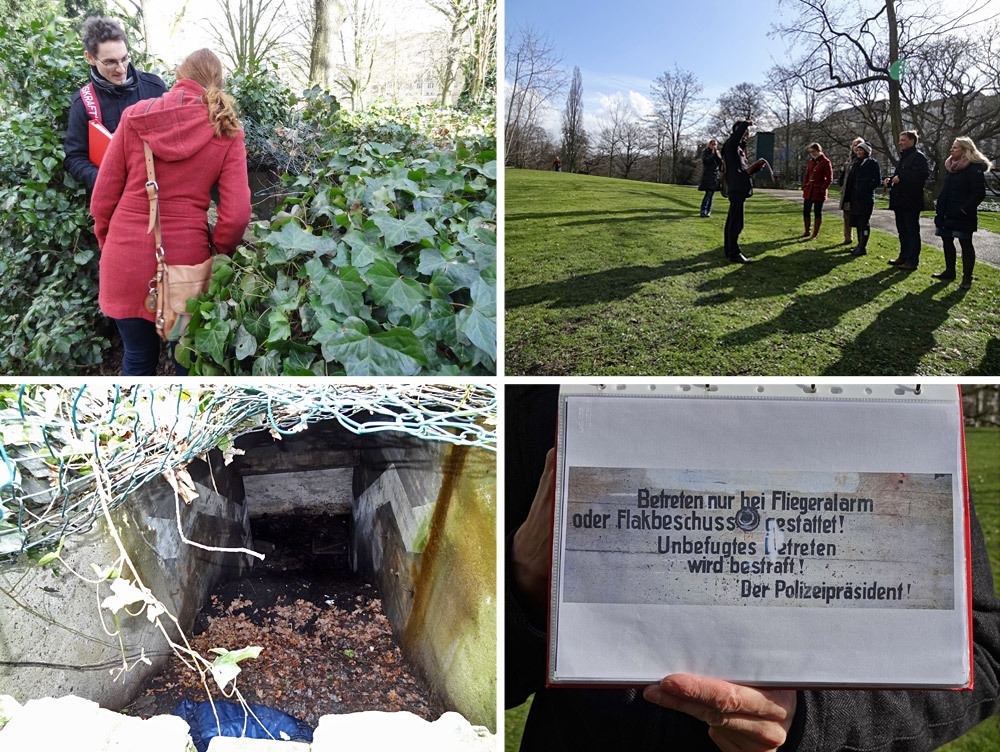
Bunkers under Bremen’s lush greenery
Our final stop is beneath Wallanlagen Park, the city’s former defensive ramparts. Wallanlagen was already a public park when these bunkers – designed to protect from shrapnel, rather than being bombproof – were built. Eight of these bunkers are here in Wallanlagen Park, and there are around 285 spread across the city. You hardly notice the entrances. The bunker in front of us has 17 rooms, each for 20 people. Andreas shows us photos, as we can’t go in. The dampness, cold and sense of claustrophobia must have been terrible. Not to mention the fear.
Anyone wanting to visit such a bunker can contact Bremen’s Schulmuseum, who will arrange it for you.
Bremen is colourful, and we love diversity!
In times of increasing immigration and worldwide crises, it’s important to many of Bremen’s citizens to speak up for the peaceful coexistence of all people, and together they stand for a democratic and cosmopolitan society. That everyone should celebrate a multicultural Bremen – and a multicultural world – is obvious, even without a tour of Bremen’s subterranean spaces. At least it is to me. The lesson that I learned on this tour, and from the history it tells us about, is that it’s important that we all relax and leave others be.
The tour takes place regularly on set dates with slightly varying stops, and is also available as a group tour. The tour starts at the elephant monument.
Success Stories
Bremen – Germany's greenest city
The greenest major city in Germany is Bremen - with an average of 60 square metres of sports, leisure and recreation space per person. Parks, sports facilities, but also water areas invite you to relax from the hustle and bustle of the city every day.
Learn moreBremen as a Street Art City: when a City becomes the Canvas
From gigantic murals to graffiti hidden in the alleyways: Bremen's street art scene is a vibrant expression of creativity and diversity. With the Street Art Cities app, anyone can now discover this world on their own - and experience the Hanseatic city from a new perspective.
Learn moreSpending the night in a former rice warehouse: the John & Will Silo-Hotel in Bremen's Überseeinsel district
Bremen has had a new hotel since the first of August 2024 – but not just any hotel. With its unique architecture and innovative sustainability principles, the John & Will Silo-Hotel by Guldsmeden stands out as a flagship project in Bremen's Überseestadt district. A place that offers far more than just accommodation and can play an important role in Bremen's tourism.
Learn more